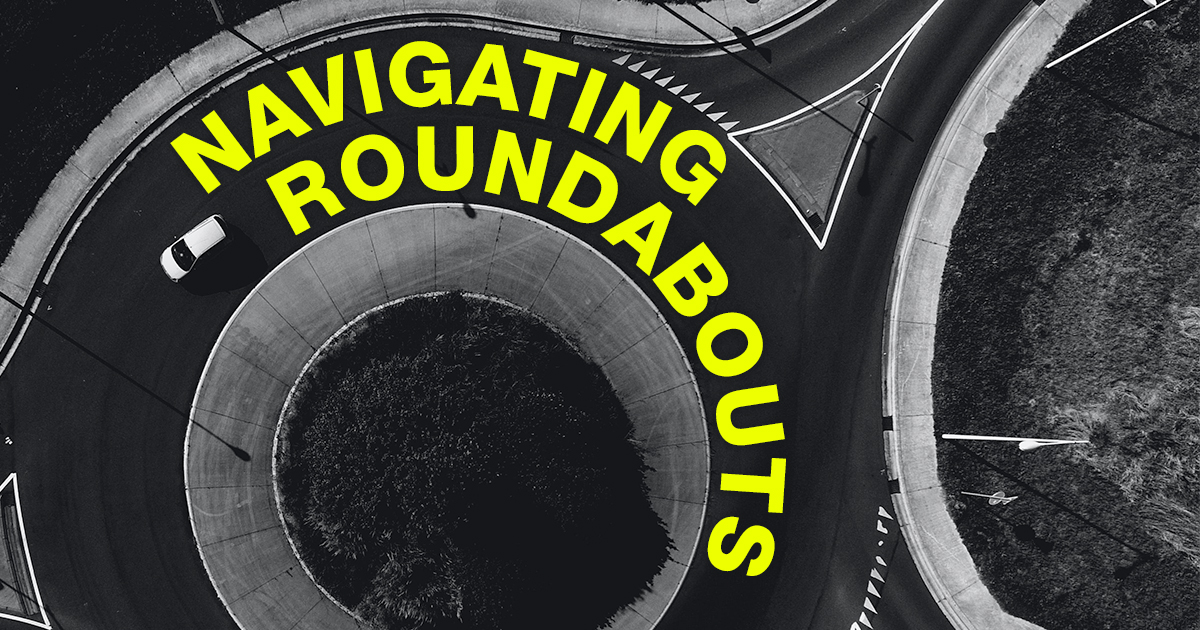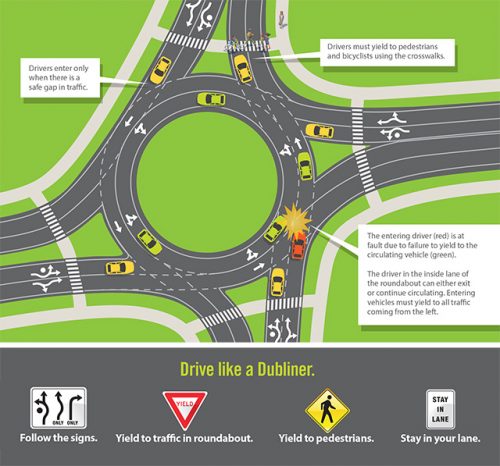Navigating Ohio’s Roundabouts
Posted in Accident & Injury on October 15, 2021
 2021 Update.
2021 Update.
Once found almost exclusively in Europe, today, there are more than 7,000 roundabouts on our nation’s roadways. The United States first roundabouts were constructed over a century ago.
What is a roundabout?
A modern roundabout is a circular intersection where drivers travel counterclockwise around a center island. They are a replacement for traffic lights or stop signs. Unlike old-fashioned traffic circles, where incoming traffic had the right of way, in a modern roundabout, drivers must yield to traffic already in the roundabout, then proceed into the intersection and exit at their desired street.
Safety benefits
Converting traffic signals to roundabouts reduces crashes resulting in injuries up to 80%. According to the Federal Highway Administration, roundabouts are designed to:
- Improve safety
- Promote lower speeds and traffic calming
- Reduce conflict points
- Lead to improved operational performance
- Meet a wide range of traffic conditions because they are
versatile in size, shape, and design
How to drive in a roundabout
Roundabouts are designed to make intersections safer and more efficient for drivers, pedestrians and cyclists. There are two types of roundabouts: Single-lane roundabouts and multi-lane roundabouts.
Important tips for driving roundabouts:
- Yield to drivers in the roundabout
- Yield to pedestrians and bicyclists using the crosswalks
- Stay in your lane; do not change lanes
- Do not stop in the roundabout
(If you’re in a roundabout when an emergency vehicle also enters, exit the roundabout first, and then pull over.) - Avoid driving next to oversized vehicles
Driving in single-lane roundabouts
Roundabouts are marked with a yellow “roundabout ahead” sign with an advisory speed limit for the roundabout, varying between 15 mph and 25 mph.
- Slow down. Reduce your speed as you approach the roundabout, and watch for pedestrians in the crosswalk.
- Yield to traffic already in the roundabout.
- Find a gap. Once you see a gap in traffic, enter the circle and proceed to your exit.
- Watch out. Look for pedestrians and use your turn signal before you exit.
Driving multi-lane roundabouts
 In a multi-lane roundabout, you will see two signs as you approach the intersection: The yellow “roundabout ahead” sign and a black-and-white “lane choice” sign.
In a multi-lane roundabout, you will see two signs as you approach the intersection: The yellow “roundabout ahead” sign and a black-and-white “lane choice” sign.
- Choose a lane. You will need to choose a lane prior to entering the roundabout.
- Turning right or going straight. Get in the right lane. You choose your lane in a multi-lane roundabout the same way you would in a traditional multi-lane intersection.
- Turning left or going straight. Get in the left lane. Drivers can also make U-turns from the left lane.
- Yield to both lanes of traffic.
- Find a gap. Merge into traffic and proceed to your exit.
- Watch out. Look for pedestrians and use your turn signal before you exit.
“Roundabouts in Dublin.” (2018, April 10). Dublin, Ohio, USA.
“WSDOT – How to Drive a Roundabout.” (2015, September 4). WSDOT – Safety. Washington State Department of Transportation.